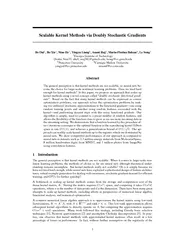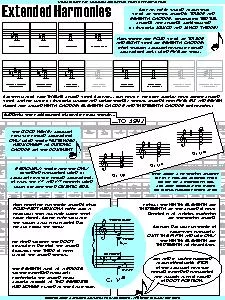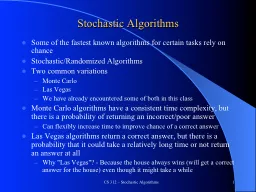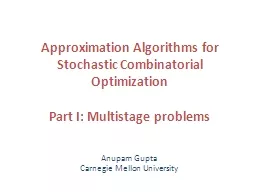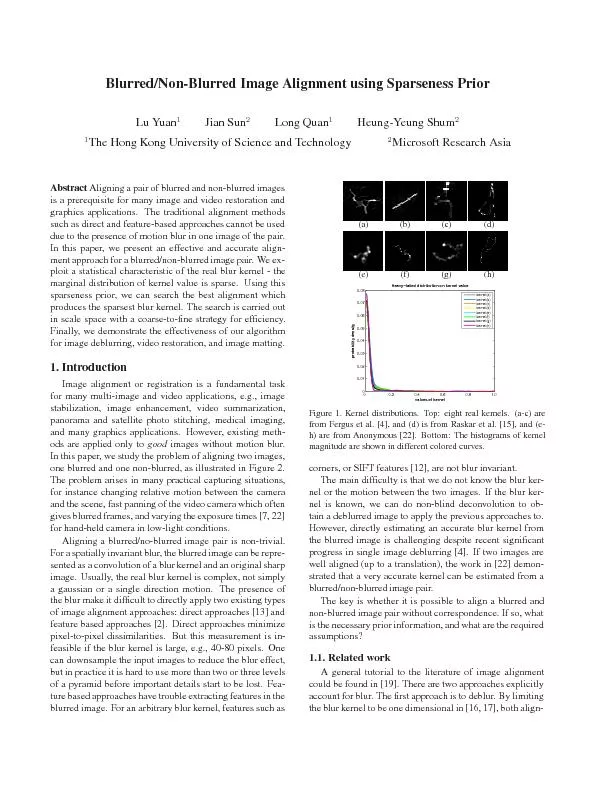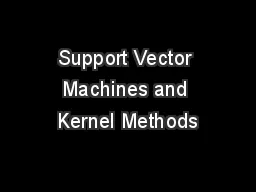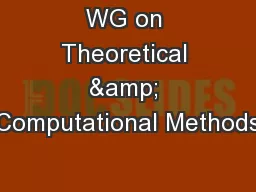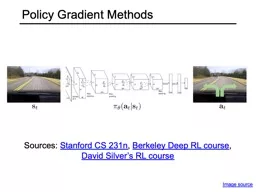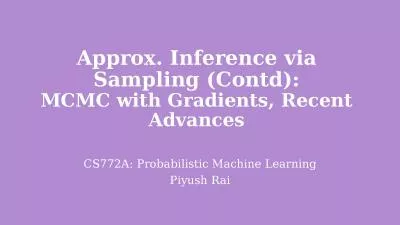PDF-Scalable Kernel Methods via Doubly Stochastic Gradient
Author : trish-goza | Published Date : 2015-06-04
edu lsongccgatechedu Princeton University Carnegie Mellon University yingyulcsprincetonedu ninamfcscmuedu Abstract The general perception is that kernel methods
Presentation Embed Code
Download Presentation
Download Presentation The PPT/PDF document "Scalable Kernel Methods via Doubly Stoch..." is the property of its rightful owner. Permission is granted to download and print the materials on this website for personal, non-commercial use only, and to display it on your personal computer provided you do not modify the materials and that you retain all copyright notices contained in the materials. By downloading content from our website, you accept the terms of this agreement.
Scalable Kernel Methods via Doubly Stochastic Gradient: Transcript
Download Rules Of Document
"Scalable Kernel Methods via Doubly Stochastic Gradient"The content belongs to its owner. You may download and print it for personal use, without modification, and keep all copyright notices. By downloading, you agree to these terms.
Related Documents

